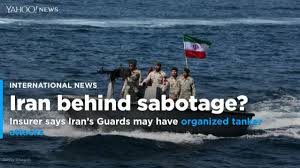
Breaking News
6.8 SPC vs. 300 Blackout: Powering Up the AR Platform
 Autism Study By McCullough Foundation Begins New Era of Free Scientific Inquiry
Autism Study By McCullough Foundation Begins New Era of Free Scientific Inquiry
 REVOLUTION DAY 8: Libertarians JOIN The Revolution
REVOLUTION DAY 8: Libertarians JOIN The Revolution
 US Government and Westinghouse $80bn Nuclear Reactor Deal
US Government and Westinghouse $80bn Nuclear Reactor Deal
Top Tech News
 Graphene Dream Becomes a Reality as Miracle Material Enters Production for Better Chips, Batteries
Graphene Dream Becomes a Reality as Miracle Material Enters Production for Better Chips, Batteries
 Virtual Fencing May Allow Thousands More Cattle to Be Ranched on Land Rather Than in Barns
Virtual Fencing May Allow Thousands More Cattle to Be Ranched on Land Rather Than in Barns
 Prominent Personalities Sign Letter Seeking Ban On 'Development Of Superintelligence'
Prominent Personalities Sign Letter Seeking Ban On 'Development Of Superintelligence'
 Why 'Mirror Life' Is Causing Some Genetic Scientists To Freak Out
Why 'Mirror Life' Is Causing Some Genetic Scientists To Freak Out
 Retina e-paper promises screens 'visually indistinguishable from reality'
Retina e-paper promises screens 'visually indistinguishable from reality'
 Scientists baffled as interstellar visitor appears to reverse thrust before vanishing behind the sun
Scientists baffled as interstellar visitor appears to reverse thrust before vanishing behind the sun
 Future of Satellite of Direct to Cellphone
Future of Satellite of Direct to Cellphone
 Amazon goes nuclear with new modular reactor plant
Amazon goes nuclear with new modular reactor plant
 China Is Making 800-Mile EV Batteries. Here's Why America Can't Have Them
China Is Making 800-Mile EV Batteries. Here's Why America Can't Have Them
Iran Used Underwater Drones In Tanker Attacks, Insurer Claims

Specifically an IRGC surface vessel is believed to have launched the underwater drones packed with between 30 and 50kg of explosives which detonated on impact, according to a new report issued this week by the Norwegian Shipowners' Mutual War Risks Insurance Association, known as DNK. Among the vessels hit were a Norwegian-flagged vessel as well as a UAE ship.
A new report by Reuters summarized the Norwegian insurance investigators' preliminary findings as based on analyzing shrapnel from the attacks which was "similar" to shrapnel recovered from surface drones used off Yemen by Iran-backed Houthi militia.
However, the insurance assessment seen by Reuters is "confidential" with an investigation still ongoing, and thus must be treated with skepticism.
Further, the evidence appears largely circumstantial at this point, with Iran's guilt appearing to hinge on the assumption that shrapnel from Houthi operations and remnant material found at the port of Fujairah are from the same source.

 China Innovates: Transforming Sand into Paper
China Innovates: Transforming Sand into Paper

